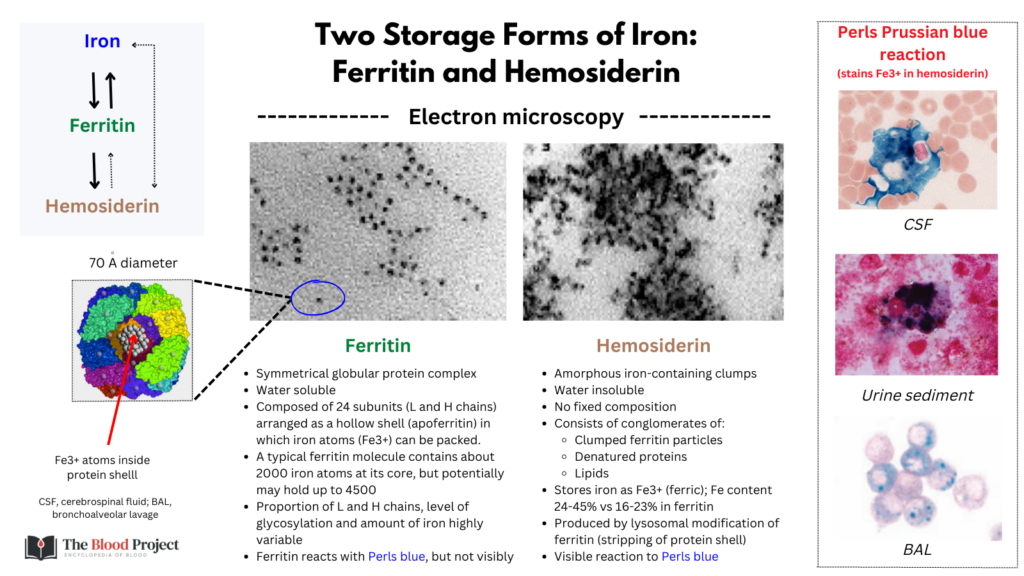What is Hemosiderin?
Prev
1 / 0 Next
Prev
1 / 0 Next
You have heard the term hemosiderin, and you have probably ordered a urine hemosiderin test in a patient with suspected hemolytic anemia and hemoglobinuria. But what is it exactly? And how does it relate to iron and ferritin?
- There are two storage forms of iron are known in animals:
- Ferritin
- Hemosiderin
- Both are present in virtually all cells/tissues but occur principally in liver, spleen, and bone marrow.
- Both contain the ferric form of iron (Fe3+).
- Ferritin degradation in lysosomes gives rise to hemosiderin.
- Hemosiderin consists of aggregates of insoluble, denatured ferritin molecules from which much of the protein shell has been removed by proteolytic digestion.12
- Tissue staining with Perls Prussian blue is able to detect hemosiderin (shows a punctate pattern of staining), but not ferritin.3
- While the normal pathway for iron storage flows from ferritin to hemosiderin:
- Hemosiderin can form through ferritin-independent pathways (when the rate of uptake of iron exceeds the tissue’s capacity to make ferritin protein).
- Hemosiderin-associated iron can recycle back to ferritin (albeit inefficiently).4
| Ferritin | Hemosiderin | |
|---|---|---|
| Iron state | Fe3+ | Fe3+ |
| Iron content | 16-23 % | 24-45 % |
| Protein shell | Yes | No |
| Water soluble | Yes | No |
| Located in lysosomes | +/- | Yes |

Prev
1 / 0 Next
